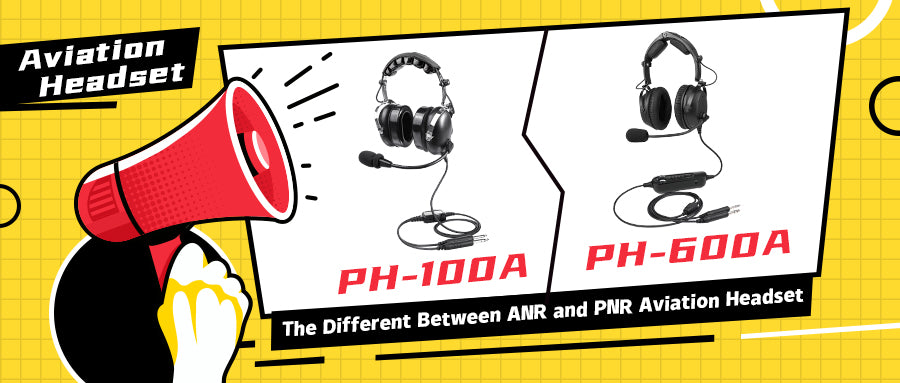
The Different Between ANR and PNR Aviation Headset
Share
In the field of aviation, noise-canceling headsets are an important tool for pilots and passengers to mitigate noise disturbances during flight. At present, there are two main types of noise cancellation technology on the market: active noise cancellation and passive noise cancellation. Both in the noise reduction principle, effect and applicable environment have significant differences, this article will teach you to distinguish between active noise-canceling headset and passive noise-canceling headset difference.
ANR (Active Noise Reduction) Headset

Noise Cancellation Principle:
Active noise-canceling headphones collect external noises through the built-in microphone and analyze the waveform of these noises in real time. Subsequently, the electronic system inside the headphones generates sound waves with the opposite waveform (opposite phase) of these noises, which are played through the speakers, thus canceling out the external noises and realizing the noise-canceling effect.
Noise canceling effect:
Active noise-canceling headphones are particularly suitable for low-frequency noises, such as the roar of an airplane engine. Its noise-canceling effect can usually reach 20-40 dB or even higher. During flight, active noise cancellation headsets can significantly reduce the interference of external noise on passengers and pilots, providing a more peaceful ride and work environment.
Applicable environment:
Active noise-canceling headphones are perfect for use in noisy environments, such as on airplanes, high-speed trains, subways and other transportation. In addition, in a noisy office environment or factory environment, active noise cancellation headphones can also play an excellent noise reduction effect.
PNR (Passive Noise Reduction) Headset

Noise Cancellation Principle:
Passive noise-canceling headphones isolate external noise mainly by physical means. They usually use structures such as earbuds or earmuffs, which fit tightly around the ear canal or ear to form a relatively closed space, thus reducing the incoming external noise.
Noise-canceling effect:
Passive noise-canceling headphones are more effective at isolating high-frequency noises, such as vocals and sharp ringtones. However, for low-frequency noises, such as the roar of an airplane engine, the effect of passive noise-canceling headphones is relatively limited. Their noise reduction effect can usually reach 10-20 dB.
Applicable environment:
Passive noise-canceling headphones are more suitable for use in environments where noise levels are relatively low or where there is a lot of mid- to high-frequency noise. For example, passive noise-canceling headphones can provide effective noise reduction in offices, libraries, classrooms, and other situations that need to be kept quiet or need to minimize the interference of human voices.
Active noise-canceling headphones and passive noise-canceling headphones each have their own advantages and applicable environments. In the aviation field, active noise-canceling headphones are usually preferred because the roar of aircraft engines is a low-frequency noise. However, passive noise-canceling headphones are also a good choice in situations where the noise level is relatively low or where there is a need to minimize the interference of high-frequency noises such as human voices. When choosing noise-canceling headphones, it is recommended that you make comprehensive considerations based on your actual needs and budget, and choose the one that suits you best.